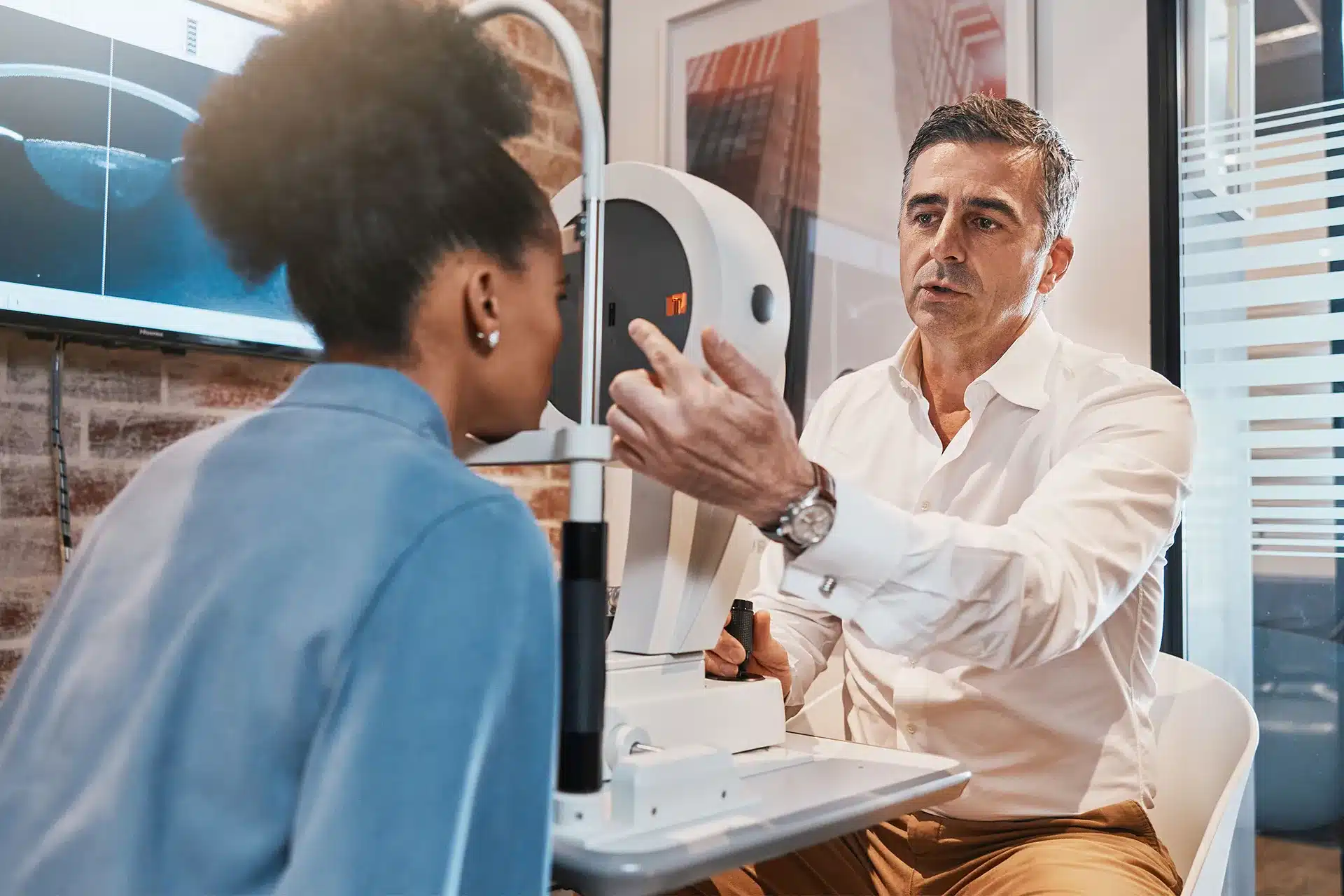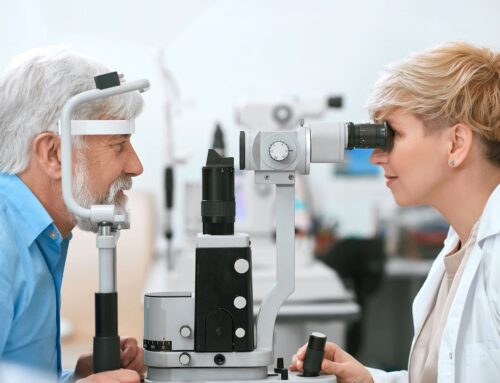If you’re over 55, you’ve likely had a conversation with your eye doctor about the possibility of your eye’s natural lenses clouding over, with an eye condition known as cataracts. This natural part of aging affects a significant portion of older adults, with nearly 25% of individuals aged 65-69 experiencing them. While this condition gradually distorts your vision, causing blurry or cloudy vision, increased light sensitivity, and difficulty seeing at night, the good news is that cataract surgery does correct vision and improves visual acuity, making the world bright, clear, and sharp again.
How Does Cataract Surgery Correct Vision?
Cataract surgery is a highly effective, outpatient procedure that corrects your vision by removing your eye’s cloudy lens and replacing it with an artificial one called an intraocular lens, or IOL for short. Beyond restoring your sight, benefits include improved independence, reduced fall risk, enhanced cognitive function, and a better quality of life.
What’s An Artificial IOL & What Refractive Errors Does Cataract Surgery Correct?
An intraocular lens (IOL) is a precisely engineered, permanent artificial lens that gives you clear vision without needing thick glasses or contact lenses. This advanced surgical technique can correct multiple vision issues simultaneously:
- Nearsightedness (myopia). Occurs when light is focused in front of your retina (the light-sensitive layer at the back of the eye) instead of on it, making distant objects and details appear blurry.
- Farsightedness (hyperopia). Occurs when light is focused behind your retina instead of on it, making nearby objects and details blurry.
- Astigmatism. Either your cornea (the outer surface of the eye) or the lens just behind it is the wrong shape; more oval instead of round. This causes vision to be blurred at all distances.
- Presbyopia. This is an age-related vision condition that causes difficulty focusing on close-up objects due to the natural hardening of the eye’s lens, typically emerging around age 40-45.
While primarily a sight-saving operation, cataract surgery’s ability to correct various refractive errors with advanced IOLs, means that many patients experience better vision after surgery than they had before developing cataracts.
Types Of IOLs Offered With Cataract Surgery
There are several types of IOLs available for cataract patients, each designed to address specific visual needs. You can read our full guide on these lens options, but here’s a quick breakdown:
- Monofocal lens. Offers a single focal point, typically set for distance vision. Reading glasses are often needed for near vision.
- Multifocal lens. Provides clear vision for near, intermediate, and far distances, but requires an adjustment period as your brain learns to process new visual information.
- Toric IOLs. Designed for astigmatism, these can be monofocal or multifocal depending on your needs and preferences.
- Extended Depth of Focus (EDoF). Extended range of vision, from distance to intermediate, with some near vision benefits.
- Light Adjustable Lenses (LAL). A premium IOL, not covered by insurance, allows for post-operative customization of vision through UV light treatments.
Most insurance plans, including Medicare, cover standard cataract surgery, but premium IOLs may have additional out-of-pocket expenses.
What Does the Procedure Look Like?
With a 10-20 minute duration per eye, here’s what you can expect from your cataract surgery:
Before Surgery
To ensure that cataract surgery does correct your vision, comprehensive measurements are taken including the axial length, corneal curvature, and anterior chamber depth. This allows your cataract surgeon to calculate the ideal power of your IOL using optical biometry or ultrasounds to obtain accurate values.
Day of Surgery
- Numbing eye drops are given to ensure your comfort.
- Your surgeon creates a small incision in the eye, typically 1.6 to 3 mm long.
- A tiny ultrasound device is inserted to break up the cloudy lens.
- The fragmented lens is removed using suction.
- An artificial intraocular lens (IOL) is implanted to replace the natural lens.
Recovery
As you heal, you may experience temporary blurred vision, mild discomfort, light sensitivity, or floaters in your vision, but these should resolve within a few days to a few weeks. Most patients can resume light activities within 24 hours of surgery, with a full recovery within 2 months.
Enjoy Your Life More With Clearer Vision – Find a Top Cataract Surgeon Near You
With modern cataract surgery boasting an impressive 95% success rate and 20/20 vision for most patients, there’s no reason to let cataracts limit your life any longer. At Best Cataract Surgeons, we connect you with top-rated cataract surgeons who use the latest techniques and technologies to optimize your visual outcome. Use our Find a Surgeon tool to access our national directory, and schedule a consultation to discover how cataract surgery can correct your vision.










